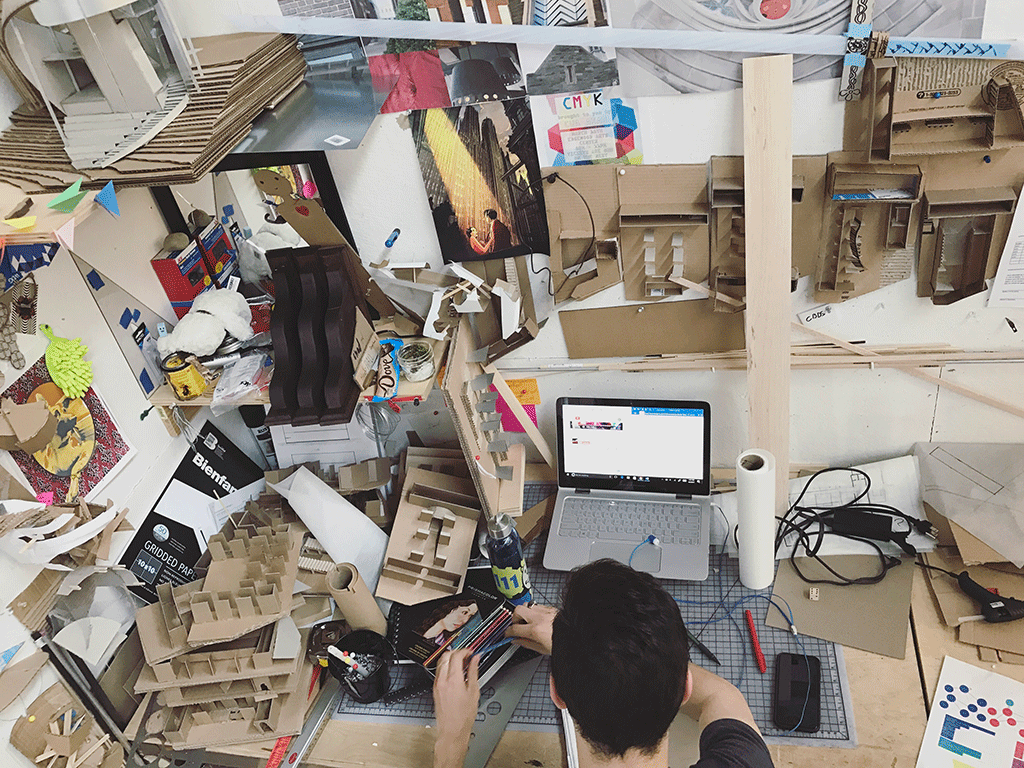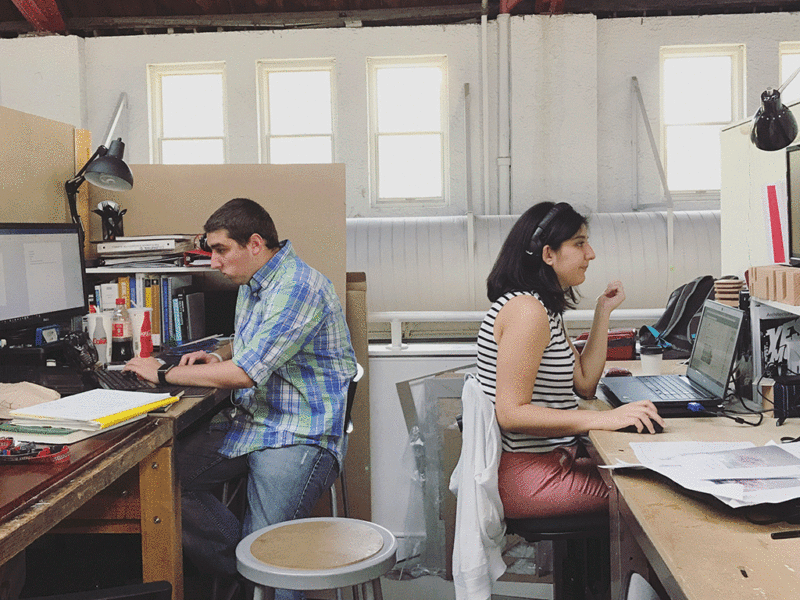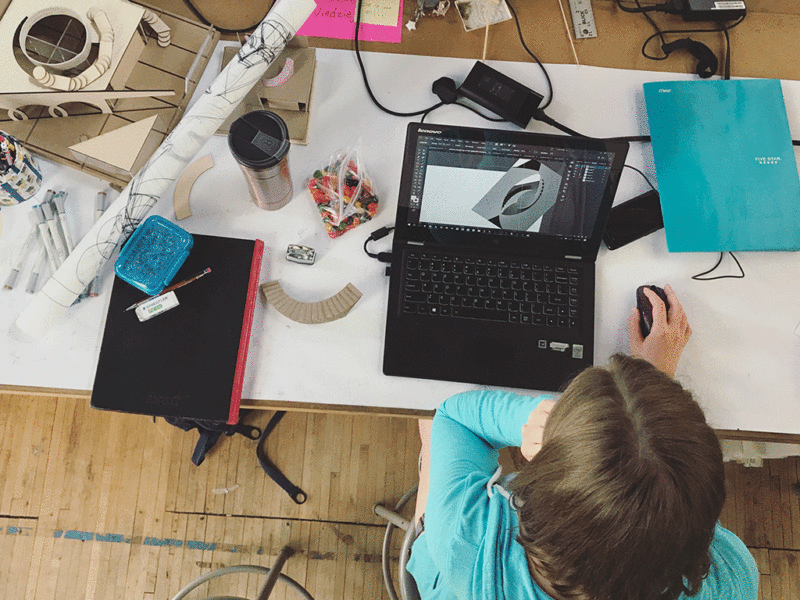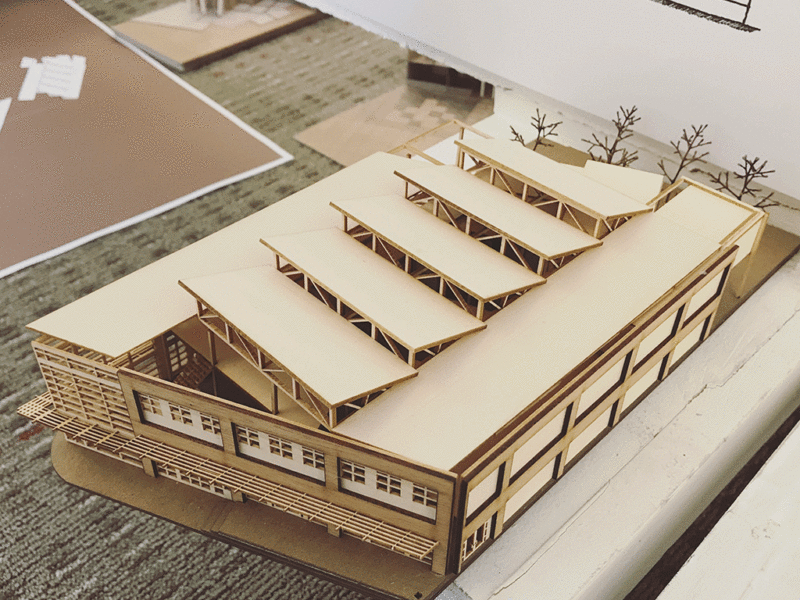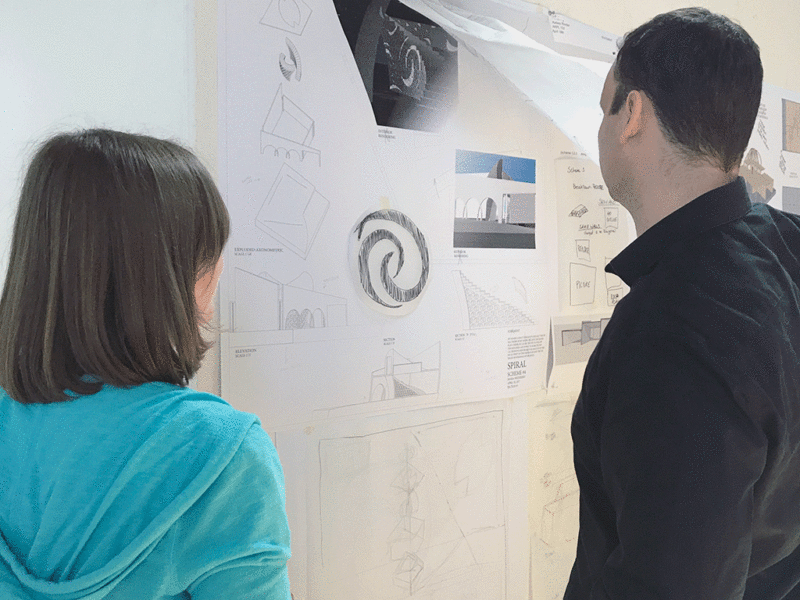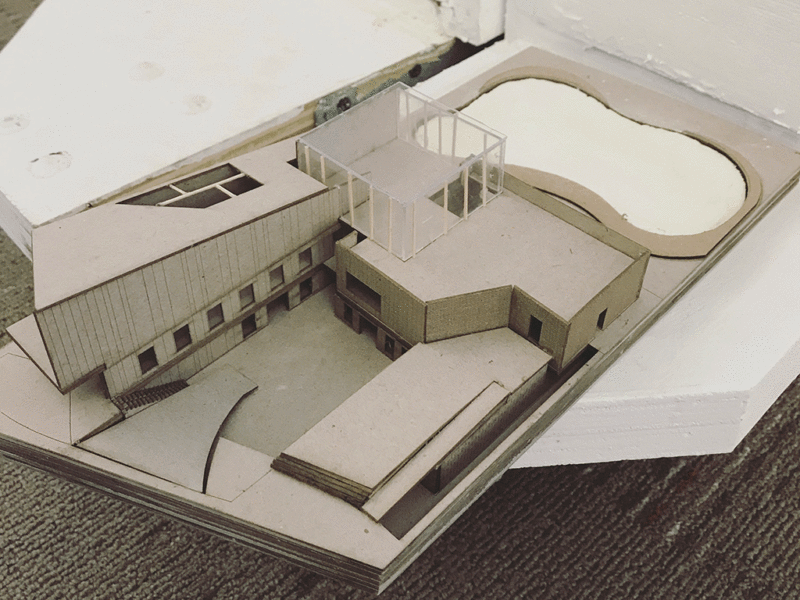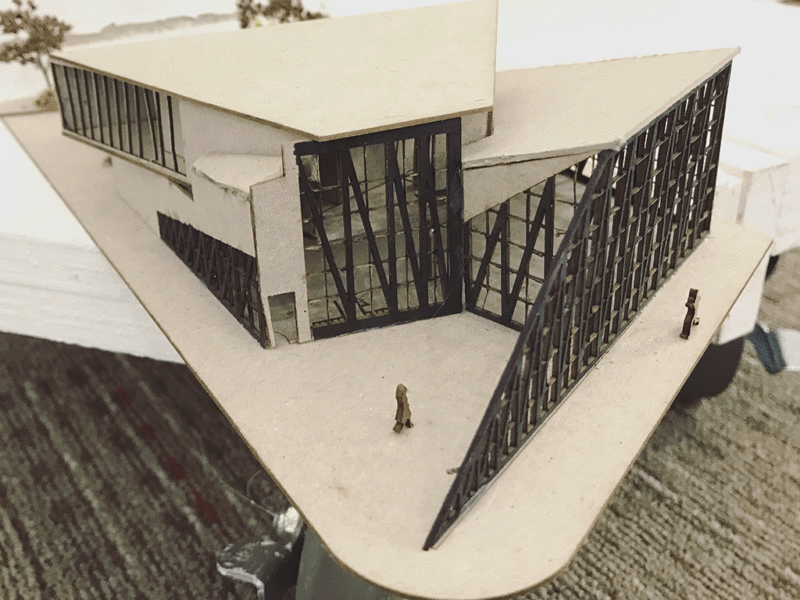It’s late at night or rather early in the morning, earlier than the sunrise, and you still haven’t slept. The vending machine is out of energy drinks, and you finished your coffee a while ago. Morning comes, and with it other architecture students that do not have a critique today. After finishing your work, you have enough time to get ready for your presentation. You clean yourself, brush your teeth, and maybe change your clothes. You pin up your work, get critiqued, take your work down and then begin to think about the changes you need to make to your designs. Maybe you send a picture of your work to your parents or your significant other, but that is it. You don’t get a chance to showcase the countless hours you’ve spent thinking, diagramming, drawing, and model building. You only get to show one final board. We spend so much time working to showcase our polished work at a critique, but that is the only thing we end up presenting. All we get to show is one final board.
It is too common for architecture students to become discouraged because of a tough critic or a bad review. We work tirelessly on our projects, only to have a few chances to actual showcase the final product. The Pin Up program was created as a way for architecture students to get another chance to present that work. Although it has just begun, we see a bright future for this program as it can really shine a light on great work. It was started at the Catholic University of America and has been featured on the school’s AIAS social media pages. Follow them at:
Instagram: @cua_aias
Twitter: @cua_aias
Facebook: CUA AIAS
The social media director takes various pictures, has a quick talk with the featured student to understand the project, and then posts their projects.
More than anything this feature is about the students. We believe that we should get some recognition for all the work rather than just our final project. The Pin Up program allows other students within our program to have the opportunity to see what others are working on. This is a way to build a strong studio culture among prospective students, current students, and faculty. With a new year approaching, CUA [AIAS] can’t wait to see what projects will be featured in the coming semesters.









